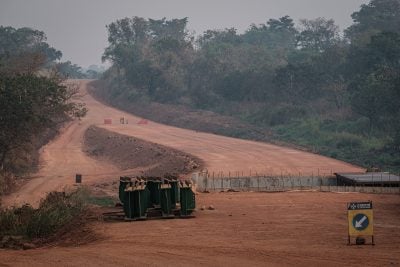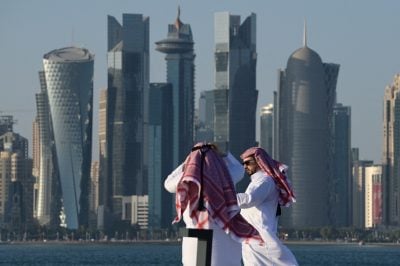The oldest known skeletal remains of anatomically modern humans were excavated at sites in East Africa. Human remains were discovered at Omo in Ethiopia that were dated at almost 200,000 years old.
The unique lives of people that today live in the Lower Omo Valley, mankind’s cradle, are the focus of Last Days in Naked Valley: The Struggle for Humanity’s Homeland, which draws on the author’s account of his time there as a senior advisor for democracy and governance with the United States Agency for International Development.
But if you were expecting a dry, academic ethnographic study, you would be mistaken. Rather, Edward DeMarco, a former Washington Post journalist, forges a lively narrative that manages to illustrate many of the contemporary development issues that challenge the indigenous peoples of this region of southern Ethiopia and which encompass vital questions of national sovereignty and environmental protection.

Pastoralist lifestyle
The peoples of the Lower Omo Valley are somewhat distinct from the highlander Ethiopians who have wielded economic and political power in the modern state. At the heart of their culture is a pastoralist lifestyle, which some in government see as a bar to modern, large-scale food production methods, including the development of a huge sugar industry. This has led to a programme of “villagisation”.
“The various tribes of South Omo have distinct and ancient cultures, usually based on an agro-pastoralist and mobile lifestyle. The Government of Ethiopia’s development plans for the region are based upon sedentarised and irrigated agriculture which it believes will greatly alleviate recurrent food security problems; a new departure for cultures whose livelihoods have remained unchanged for centuries,” writes DeMarco.
It is a dilemma familiar across Africa – how to ensure that development can take place in areas with unique, centuries old-traditions.
De Marco worked with a team under the auspices of the multi-government Development Assistance Group, an influential forum for all of Ethiopia’s international funders, including the US.
“The task set for us: size up how well the villagisation push was going and look for signs of hostile intent – or outright hostilities – from the federal democratic republic… together we would venture through the Omo Kuraz plantation in the far west to see whether sugarcane and villagisation really were taking hold…
“As the international activists claimed, were the pastoralists truly being rounded up, or worse, and forced off their ancient grazing lands? What kinds of pressure were they facing from the sugar juggernaut? Could the Indigenous peoples somehow adapt and hang on, clinging to their body art, bracelets, and bare skin?”
Tensions in the valley
While the Lower Omo Valley seems remote from the Ethiopian capital, plans for the 370,000 acre Omo Kuraz Sugar plantation put it firmly on the map. In order to pave the way for the development, policymakers planned the construction of the monstrous Gilgel Gibe III dam, “a project so bold and sprawling that the Italian occupiers of Ethiopia in the 1930s, who dreamed of building an African farming colony, would have recoiled con stupefazione,” writes DeMarco.
Into this picture came the figure of Molloka Wubneh Toricha, a representative of the northern-dominated, all-powerful Addis Ababa administration described as a “Zonal Czar”. But his plans on behalf of the central government quickly ran up against the furious protests of international activist organisations that accused the government of forcing people off their land to make way for the developments.
Among the most vocal foes of the Ethiopian plans was the California-based Oakland Institute, which reported that 170,000 indigenous Omo peoples from ten ethnic groups lived in peril along or near the Omo River.
Molloka reflected the views of his superiors in Addis Ababa – foreign organisations were viewed as meddlers “standing in the way of progress, more interested in preserving backward ways than basking in sugarcane-filled glory days” writes DeMarco. Late Ethiopian prime minister Meles Zenawi complained of “people who want to block our freedom to use our rivers, and to save our people from poverty”.
“They are creating huge propaganda, and they don’t stop there,” he said. “They are blocking us from getting financial loans from abroad to finish the project. There are also some people who are the best friends of backwardness and poverty but claim to be concerned about environmental conservation.’’
Meles said that he wouldn’t allow the people of the valley “to be a case study of ancient living for scientists and researchers”.
Violence erupts
It was clear that trouble was brewing. Serious violence erupted in January 2015, at Dumeka, a Hamar village, when militants surrounded a government security forces detachment sent to the scene. A gunfight erupted and four policemen and a female teacher were killed.
Three days after the fighting, a mediator arrived who managed to secure the return of the dead policemen’s bodies. But four months later, after the Ethiopian army arrested the suspected leader of the rebellion, supporters responded by surrounding the police station where he was being held and demanded his release. The army moved in and serious fighting took place before an uneasy calm resumed.
The tragic swing from debate to violence is an illuminating case study in the endless complications of development in regions on the frontline of change.
While such conflicts may have been temporarily marginalised by the enormous civil war focused on the Tigray region, DeMarco’s fascinating account shows that Ethiopia’s future will continue to be defined by the tension between development and tradition.
Want to continue reading? Subscribe today.
You've read all your free articles for this month! Subscribe now to enjoy full access to our content.
Digital Monthly
£8.00 / month
Receive full unlimited access to our articles, opinions, podcasts and more.
Digital Yearly
£70.00 / year
Our best value offer - save £26 and gain access to all of our digital content for an entire year!

 Sign in with Google
Sign in with Google 





